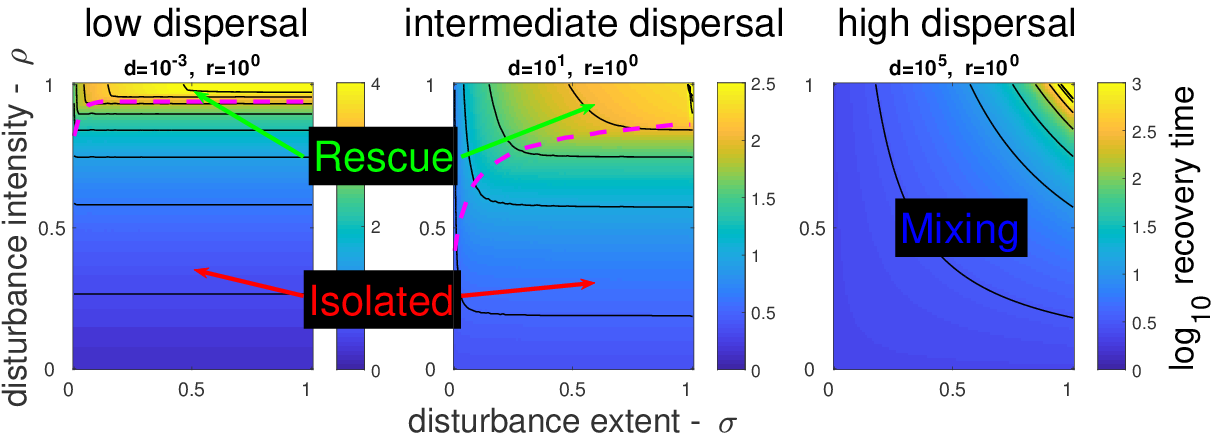
Numerous studies in ecology have considered the effects of spatial structure on various properties of populations, communities and ecosystems. Very few have asked how the interplay between local and spatial processes can lead to well defined regimes with distinct dynamics, or how changing the spatial structure (as might occur due to landscape fragmentation) can switch the system between these regimes.
As it turns out, by focusing on the role of dimensional properties in these systems (e.g. system size or rate of biomass growth), we can make predictions about specific systems from general considerations, and we can better compare distinct systems, that might otherwise seem completely unrelated.
The aims of this project are:
- Find the relevant dynamical regimes for different premises about ecosystem properties (e.g. strong spatial heterogeneity), and derive predictions for transitions between them.
- Validate such theoretical results with data from observations and experiments, based on past studies.
- Explore how and when these dynamical regimes can qualitatively change due to alterations of the landscape.